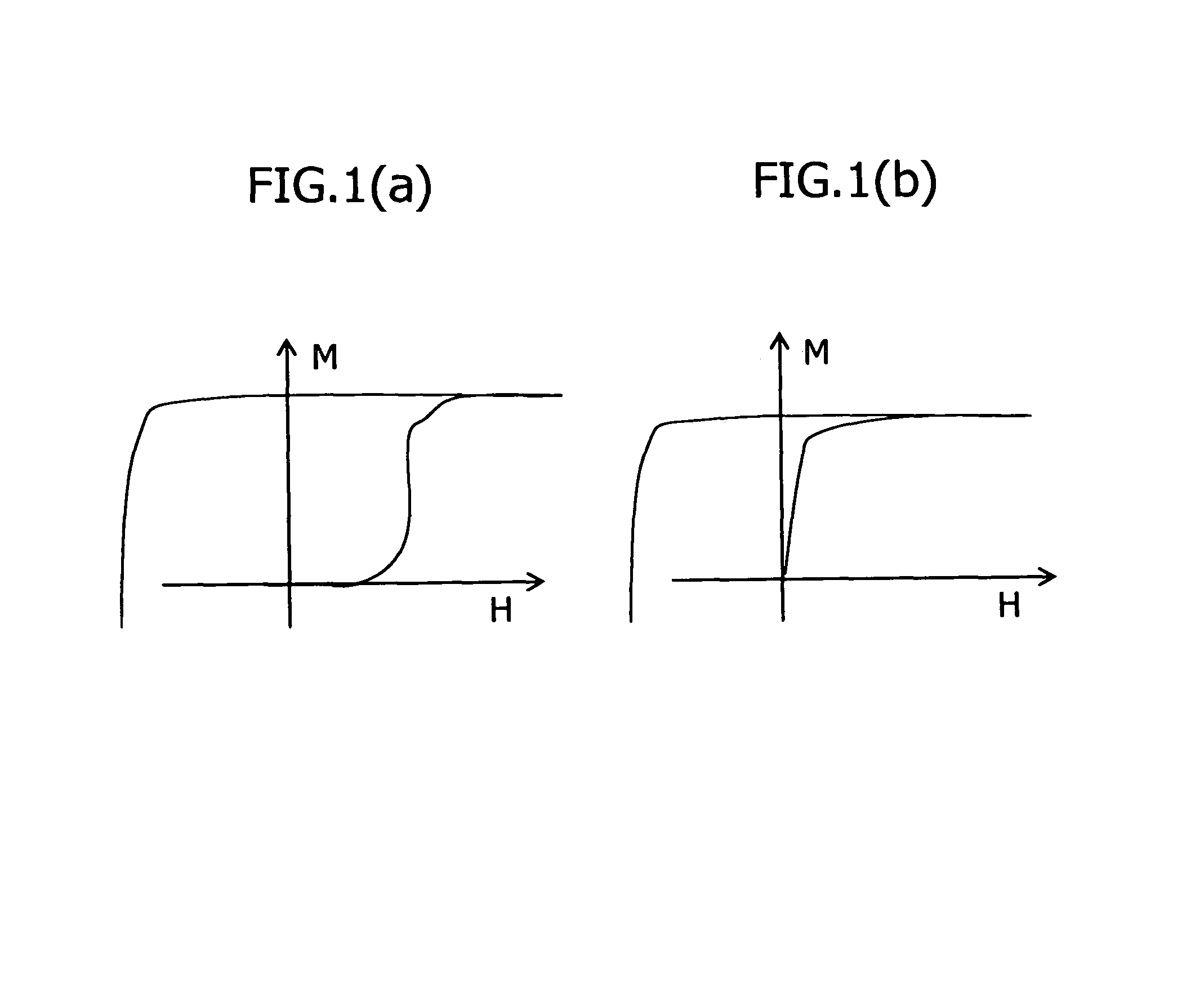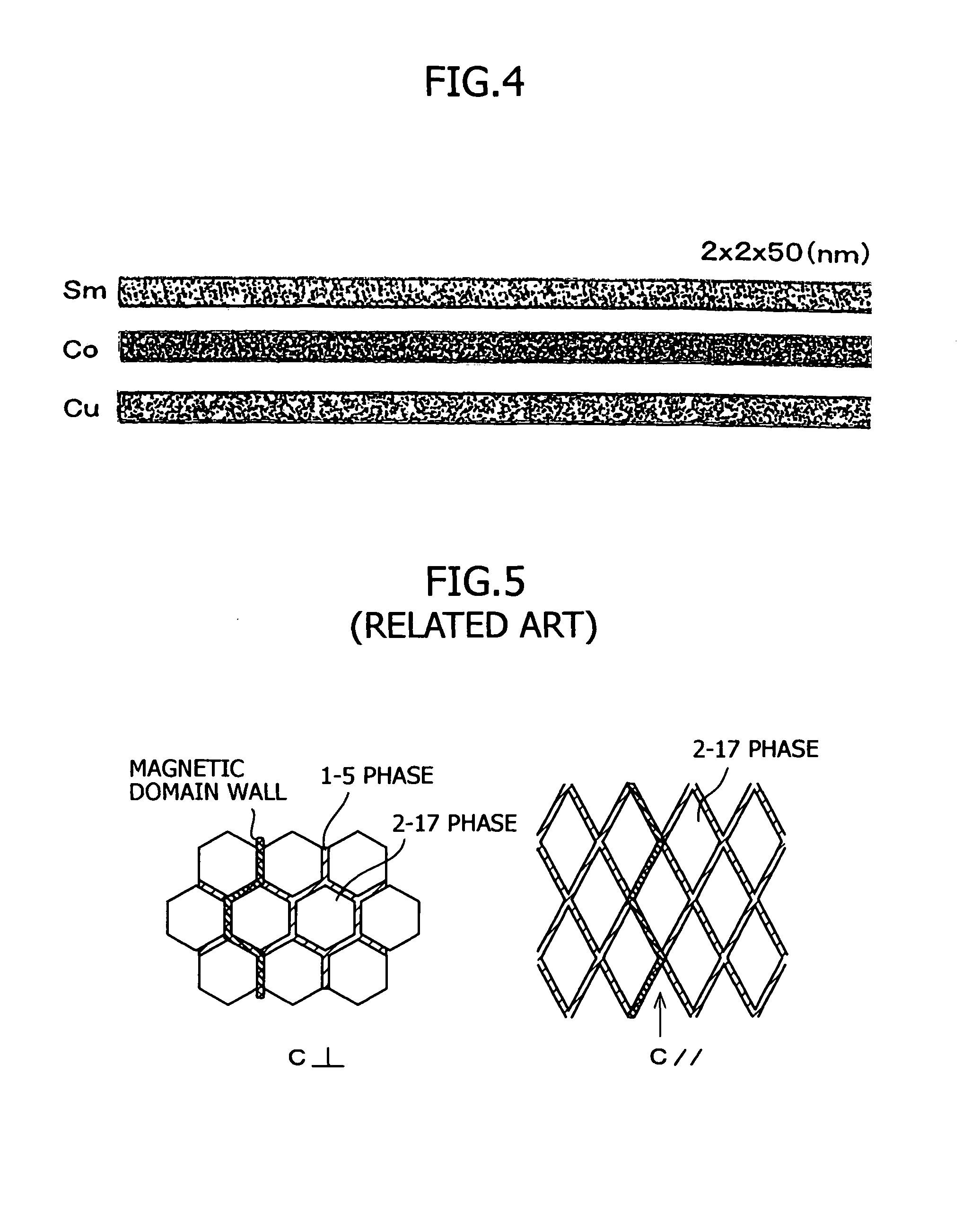Rare earth permanent magnet
a permanent magnet, rare earth technology, applied in the direction of magnetic bodies, electric furnaces, furnaces, etc., can solve the problems of difficult to maintain effective coercive force, rapid decrease of coercive force, and inability to find distinct concentration fluctuations even at an atomic level. , to achieve the effect of simple process
- Summary
- Abstract
- Description
- Claims
- Application Information
AI Technical Summary
Benefits of technology
Problems solved by technology
Method used
Image
Examples
example 1
[0095]An alloy was fabricated by weighing out 99.9% pure Sm, Co, Fe and Ti or V corresponding to Sm(FeresCo0.20Ti0.065)8.3 or Sm(FeresCo0.20V0.09)8.3; melting them in a high frequency furnace in a reduced pressure argon atmosphere; and casting in a water cooled mold. The alloy was micro ground to an average particle diameter of 4 μm in a jet mill using N2 gas. While aligning the magnetic field of the micro powder in a magnetic field of 15 kOe, the particles were pressure molded at a pressure of 1 ton / cm2 to provide a molded body. In an argon gas atmosphere, the molded body was sintered at 1210° C. for one hour, and sequentially followed by solution heat treatment at 1195° C. for two hours to fabricate a sintered body. Subsequently, the sintered body was cut into thin sintered plates having a thickness of 0.5 mm by cutting. The thin plates, and the alloy micro powder (powder of approximately 4 μm), were both maintained at a temperature of 500° C., with introduced N2 gas and then nitr...
example 2
[0098]An alloy was fabricated by weighing out 99.9% pure Sm, Co, Fe, Cu and Zr corresponding to Sm(CoresFe0.20Cu0.15Zr0.025)7.5; melting them in a high frequency furnace in a reduced pressure argon atmosphere; and casting in a water cooled mold. The alloy was micro ground to an average particle diameter of 4 μm in a jet mill using N2 gas. While aligning the magnetic field of the micro particles in a magnetic field of 15 kOe, the particles were pressure molded at a pressure of 1 ton / cm2 to provide a molded body. In an argon gas atmosphere, the molded body was sintered at 1210° C. for one hour, and sequentially followed by, solution heat treatment at 1195° C. for two hours to fabricate a sintered body. Aging heat treatment, typically performed on the 2-17 SmCo-based magnet, was not performed at all.
[0099]The hysteresis curve of the sintered body was measured by a BH tracer, and it showed a pinning-type initial magnetization curve, as shown in FIG. 7. It had a coercive force of Hci=7.5...
PUM
| Property | Measurement | Unit |
|---|---|---|
| Curie point | aaaaa | aaaaa |
| particle diameter | aaaaa | aaaaa |
| size | aaaaa | aaaaa |
Abstract
Description
Claims
Application Information
 Login to View More
Login to View More - R&D
- Intellectual Property
- Life Sciences
- Materials
- Tech Scout
- Unparalleled Data Quality
- Higher Quality Content
- 60% Fewer Hallucinations
Browse by: Latest US Patents, China's latest patents, Technical Efficacy Thesaurus, Application Domain, Technology Topic, Popular Technical Reports.
© 2025 PatSnap. All rights reserved.Legal|Privacy policy|Modern Slavery Act Transparency Statement|Sitemap|About US| Contact US: help@patsnap.com



